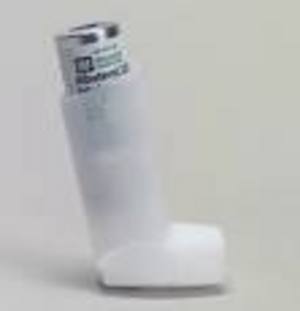A pulmonary embolism occurs when a blood clot lodges in one of the arteries located in your lungs. The source of the majority of such blood clots involved in a pulmonary embolism is the legs, but they can also make their way from the arms, pelvis, and heart. In a pulmonary embolism, the clot will travel through the larger vessels of the lung into the smaller one until it can go no further, blocking the vessel and cutting off that section of the lung from receiving blood. When this happens, the affected region of the lung dies from lack of blood and oxygen; this is known as an infarction. A pulmonary embolism can be fatal, and it is one of the leading causes of hospital death, as patients recovering from traumas and surgeries are at high risk.
A blood clot is comprised of platelets, cells that repair injured blood vessels, tangled together with red blood cells and a kind of protein called fibrin. Blood clots usually form to aid in the stopping of bleeding when an injury occurs, but they can also form for no reason. A clot that forms and remains in a vein is known as a thrombus; one that travels to other areas is an embolus. An embolus can also be a substance like a bit of a tumor or a fat globule that enters the bloodstream. Most pulmonary embolisms are precipitated by clots that form in the legs, and there is no way to predict when such a clot will break free and begin the journey that will bring it to the lungs, where all of the blood in the body passes every time it circulates through the heart.
Some of the reasons for blood clots include an individual being confined to a bed because of a stroke, surgery, or a traumatic injury, where clots can form in the arms and legs due to long periods of inactivity that decrease blood flow. Pulmonary embolisms are the third leading cause of death in hospital patients, who develop clots while they are recuperating. Traveling for hours on end, all while sitting in the same position, can be a factor in clot formation, as can a recent surgery. Obesity, heart disease, and pregnancy all add to the risk of having a clot come into being.
Symptoms of a pulmonary embolism include a sudden shortness of breath, whether you are resting or in the process of doing something rigorous. Chest pain will accompany this, sharp pain or a dull ache that worsens when you take a deep breath. Coughing that results in bloody sputum and excessive sweating is to be looked for, along with a rapid heartbeat and dizziness. These symptoms can differ depending on how much of your lung has been affected by the pulmonary embolism. Emergency treatment is of the utmost importance, as ten percent of those with a pulmonary embolism succumb in the initial hour after having it. Those that survive and are treated almost always have a good prognosis for recovery.
Right away after being diagnosed with a pulmonary embolism, you will be given an anti-coagulant such as heparin, which will quickly stop existing clots from getting any bigger and prevent new ones from materializing. Other anti-coagulants will be introduced into your system, and once the original clot is no more, you will still stay with the blood thinning medications, depending on the severity of the embolism. Chronic cases and those at high risk of pulmonary embolism may need to always be on these types of drugs. In the event of a massive pulmonary embolism, you will be treated much more aggressively, with drugs used to attack and dissolve the clot in your lungs. Vein filters may be surgically placed into the main veins in your abdomen coming from your legs to stop any future clots from reaching the lungs.
There are steps that can be taken to reduce the risk of having a pulmonary embolism, despite their unpredictability. Those at high risk of clots to begin with, and people having an operation, will receive anti-coagulants. For example, if you are having a hip replacement, you will be given shots of heparin before the actual procedure and injections of blood thinners in your abdomen twice a day for as long as three weeks after. Compression stockings are designed to squeeze your legs, aiding your veins and leg muscles to keep blood moving while you are lying in bed. Hospitals also employ pneumatic compression devices that inflate every few minutes and compress the veins of the leg; hip replacement patients will wake up with these on both of their thighs.
Those engaged in long trips, either by airplane or automobile, are encouraged to take walks, either in the plane’s cabin or at a rest stop. Exercises that can be performed while sitting include flexing and rotating the ankles or pressing your feet against the seat in front of you; crossing your legs for any length of time is not advisable. Again, compression stockings are a good idea in this setting, and anyone on a long trip should drink plenty of fluids to circumvent dehydration, which can help blood clots develop.



